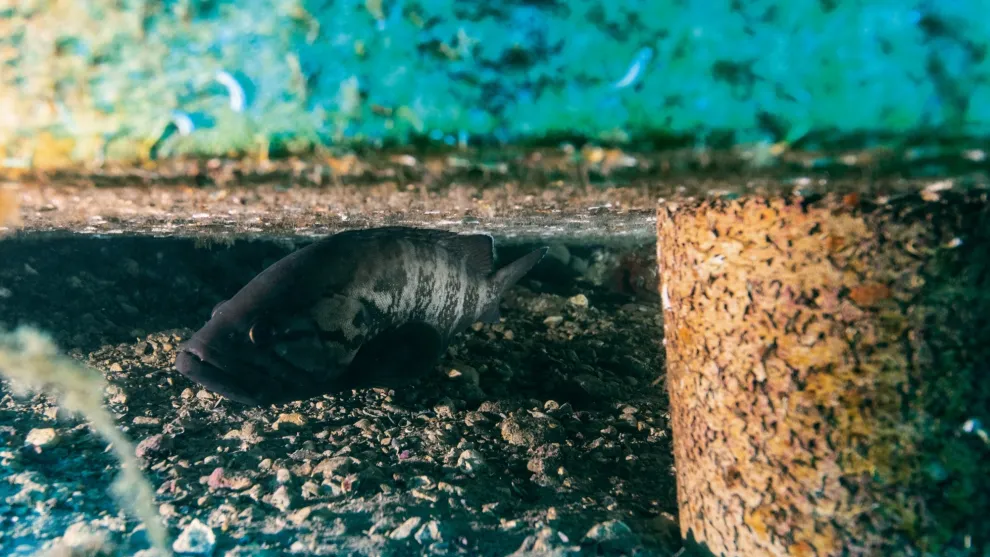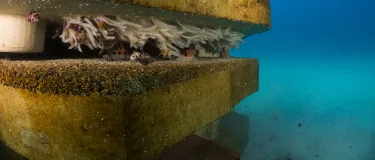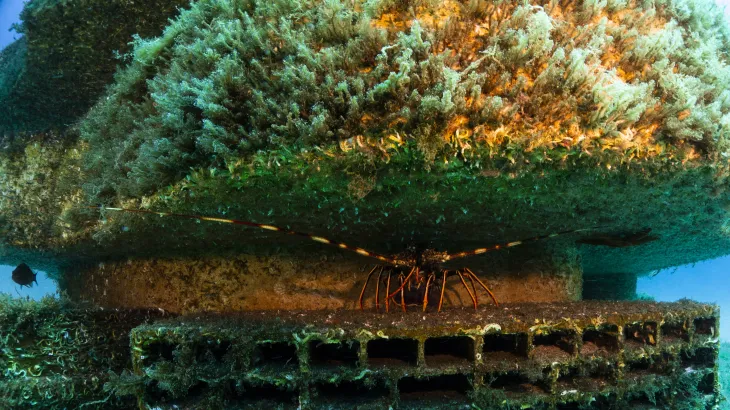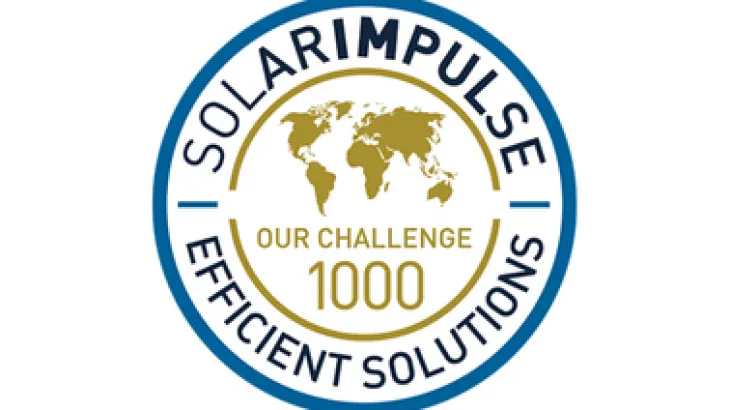Bio-active concrete solutions
The preservation of marine habitats is a pressing global issue, requiring urgent and innovative solutions on a major scale. By partnering with EGIS/Seaboost, our teams have contributed to artificial reefs that will help support the marine ecosystem on the French Mediterranean coast.
Holcim partnered with EGIS/Seaboost, specialists in innovative systems for the recovery of marine biodiversity, to develop innovative concrete solutions for the rehabilitation of damaged coastal ecosystems.
The innovation lies in both a tailor-made reef design as well as the special concrete formula used for its construction. The concrete mix-design and placing process patented by Holcim allows the formation of a dense bottom layer topped with a layer of porous concrete. The structural and chemical characteristics of this innovative concrete, as well as the reef’s design, were specifically defined to allow rapid colonization by a great diversity of local marine animals and plants.
- Marine habitats have suffered dramatic damage in recent decades, due to global warming and pollution, disturbing the balance of oceanic ecosystems as a whole.
- An estimated quarter of the world's coral reefs have already suffered irreversible damage, and that two-thirds are seriously threatened.
- Enhancing marine biodiversity through various solutions such as innovative bio-active concretes for port infrastructures can be one important answer to improve aquatic ecosystems.
We are delighted that our bio-active concrete solutions can help the preservation of marine wildlife. The roll-out of the current project demonstrates our commitment to drive global sustainable development. This is certainly a step forward for the new maritime bio-receptive infrastructures.
The first reef units were immersed early in 2018 in the Mediterranean Sea and will be monitored over the next three years through acoustic, visual and photogrammetric measurements. The marine specialists involved in the evaluation of the site’s rehabilitation, confirm that the first results show promising signs of success. Holcim and Seaboost are currently working on other pilot projects around the globe to evaluate how the solution can be extended to other areas suffering from marine degradation.

Restoring functional ecosystems along the planet’s urban coastlines is one of the urgent challenges mankind faces to counter the loss of marine biodiversity. To this day, however, this remains a complex task, as solutions applicable on a large scale still remain to be invented. We believe that this development could prove an effective tool for the restoration of degraded habitats
About Seaboost
Seaboost is a subsidiary of the EGIS group which designs, develops and deploys innovative solutions for the recovery of marine biodiversity. With a full range of ecological, engineering and construction skills, Seaboost offers a unique turnkey service to reconcile human activities with the preservation of marine ecosystems. The applications of this expertise are numerous: restoration of damaged natural habitats, improvement of the ecological functionalities of marine works through eco-design, control of impacts of works and activities at sea, adaptation to climate change, development of fishing and diving, etc. Based on the principles of biomimicry, performance and customization, their solutions are designed with a constant concern for economic optimization and large-scale applications.








